Patent MarketPlace: Wind Power, Solar Power and Other Energy Patents
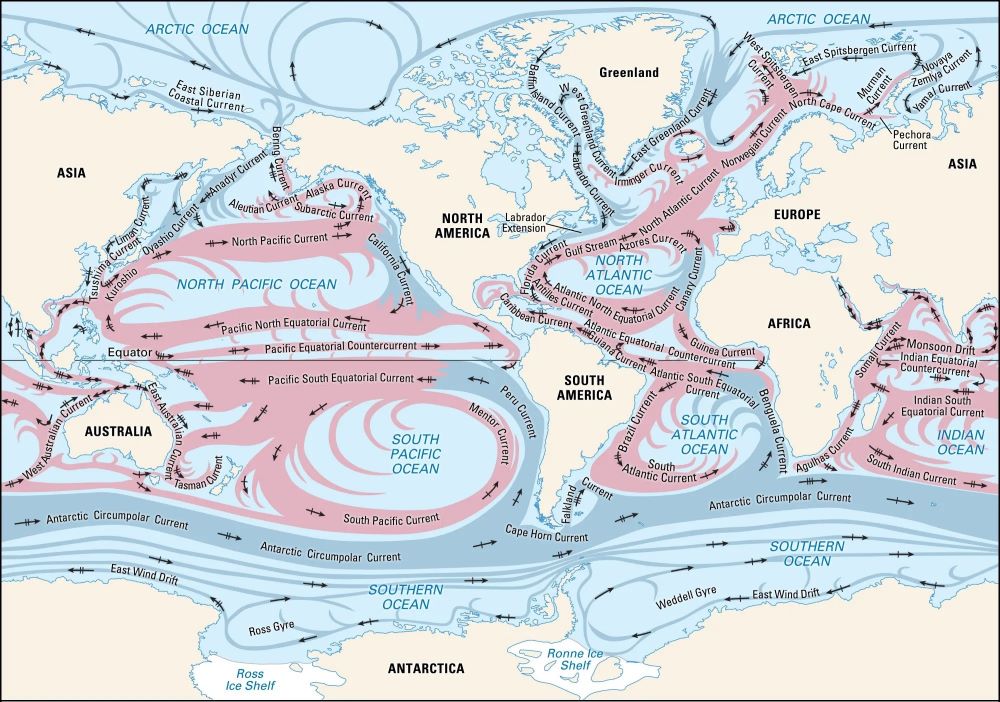 Floating Hydroelectric and Sea Currents Power Plant (Sklivanos): International Patent Application Portfolio
Floating Hydroelectric and Sea Currents Power Plant (Sklivanos): International Patent Application Portfolio
Hydroelectricity is a very economical source of electric power. Once the initial investment in the facility has been made, operating expenses are minimal and there are NO fuel costs. The problem with hydroelectricity is that virtually all of the rivers in the industrialized nations that can be dammed for hydroelectricity have been dammed – from Niagara Falls to Hoover Dam and hundreds in-between.
This patent application portfolio takes hydroelectric power to the next level by creating a floating hydroelectric power plant! No piles have to be driven and no cement needs to be poured. This portfolio covers a device that floats on the surface of the water while a continuous belt of blades is driven by the current. This technology can be used in rivers where a dam and powerplant cannot be built, but there is a flow velocity of at least 0.5 meters-per-second. The technology can also be used in any of the oceans in the world using sea currents – for a continual and virtually free souce of electricity. A floating hydroelectric power plant based on this portfolio can be configured in different sizes based on the location in which it will be used, and will likely generate from 50 kilowatts to two megawatts in a river location, more using sea currents.
Patent Portfolio
- U.S. Patent Application 11,815,063: Hydro power plant
- European Patent Application 3921537: Hydroelectric power plant
- Canada Patent Application 3129332: Hydroelectric power plant
- PCT Patent Application 2020160786: Hydroelectric power plant
This portfolio creates an opportunity for any manufacturer of electrical generation equipment to introduce a totally new concept in small-scale hydroelectricity. And the acquirer of the portfolio can use the PCT Patent Application to secure additional patent protection anywhere in the world.
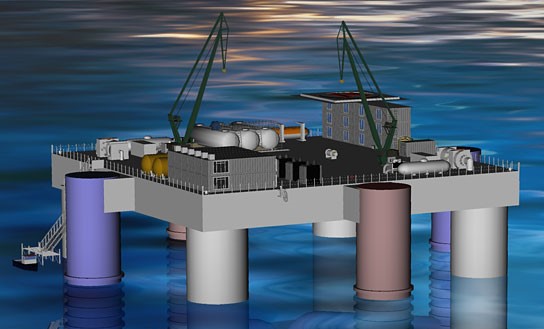 Higher Efficiency Ocean Thermal Energy Conversion (Cowden): Two U.S. Patents
Higher Efficiency Ocean Thermal Energy Conversion (Cowden): Two U.S. Patents
The search continues for sources of renewable green energy. All the rivers in the U.S. that have the capacity to produce hydropower have been dammed. Solar and wind are being widely implemented, but they both have limitations. Energy generated from the ocean using the difference between the colder deep water and the warmer shallow water - Ocean Thermal Energy Conversion (OTEC) – is just beginning to be exploited. This patent portfolio takes that technology to the next level.
This invention covered by this portfolio uses a working fluid such as ammonia with a Rankine cycle along with a heat exchanger that includes a fluid transfer assembly, a pump, a heater, a turbine, and a generator. The fluid transfer assembly utilizes a condenser conduit to condense working fluid by transferring the fluid to the cold depths of the ocean before returning it to the warm surface through an insulated return conduit. The working fluid is vaporized by a heater before entering a turbine connected to a generator to produce electricity. A second heater may be added to the system to create an Ocean Thermal Energy Conversion power plant that also produces potable water!
This patent family includes U.S. Patent No. 8,572,967 for a “High efficiency OTEC system” and U.S. Patent No. 9,032,732 for a “High efficiency OTEC service station.” This portfolio would be a strategic acquisition for any manufacturer of power generation stations – either as a path to enter the OTEC segment or to leapfrog the technology of other OTEC generation station OEMs.
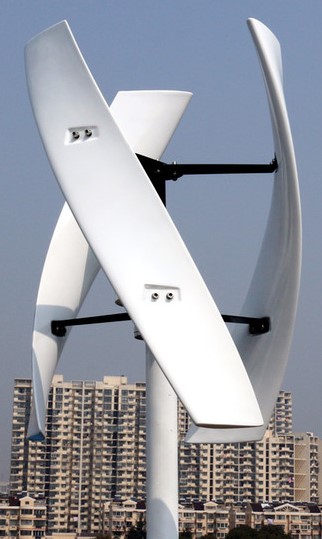
 Hybrid Vertical Wind-and-Solar Turbine (Lee-Pienkowski): U.S. Patent No. 8,338,977
Hybrid Vertical Wind-and-Solar Turbine (Lee-Pienkowski): U.S. Patent No. 8,338,977
Wind turbines are everywhere, and the fastest-growing segment is the vertical-axis turbine. Horizontal-axis wind turbines are simply a newer version of the old Dutch windmills from hundreds of years ago that uses airplane-like propellers. Vertical-axis wind turbines catch the wind and thermal updraft to spin on a vertical axis. Vertical-axis wind turbines enjoy many benefits. They are cheaper to manufacturer and easier to install than horizontal-axis turbines. They do not have to be turned into the wind as they generate power from a fixed position. Their vertical blades turn slower than horizontal blades, so they are safer for humans and birds, and they can be mounted closer to the ground than horizontal-axis turbines.
This patent takes the vertical axis wind turbine to the next level of performance by adding solar and creating solar photovoltaic rotation in a hybrid wind/solar electrical-power generation system. When wind velocity drops, the solar cells provide power to a motor that drives the wind turbines so electrical current is being generated even at low wind speeds. When wind speed is sufficient to turn the turbine blades at the desired speed, electrical power from the solar cells is stored in a battery so it is available when needed after sunset. This configuration creates an electrical-power generating configuration that is far more productive than just a wind-only turbine or just a rooftop of solar panels.
U.S. Patent No. 8,338,977 for a “Hybrid vertical axis energy apparatus” would be a critical acquisition for any vertical-axis wind turbine manufacturer. The invention can be incorporated into next-generation vertical-axis turbines or retro-fitted to vertical-axis wind turbines currently in use.
 Smarter Battery Charging (Sioma): Two U.S. Patents
Smarter Battery Charging (Sioma): Two U.S. Patents
What happens when a battery recharger does not have an accurate controller that turns off the charger after the battery is fully charged? At the very least, it shortens the battery life. At the very worst, it can result in a battery fire! The larger problem is that if your battery charger is not turning itself off when the battery is fully charged, you do not know, so – unbeknownst to you – your battery charger is dramatically shortening the life of your battery.
This portfolio covers technology for active-error correction for battery chargers. U.S. Patent No. 9,570,933 covers high-voltage batteries while U.S. Patent No. 10,992,157 covers batteries up to 48 volts. Both patents include technology that eliminates errors due to resistive elements such as the internal resistances of the power source, cables, cable connectors, and the battery itself. These patents do not simply create better battery charging – their design is based on Amplitude Modulation (AM) as the primary source of power and the elimination of the inherent errors in current charging systems.
Charging systems based on this portfolio can use either AC or DC current, so both regular 120 Volt AC wall current can be used, or a DC source of power such as solar panels with the addition of a one-chip circuit. It will charge any type of rechargeable battery in a wide range of voltages, and can be stationary or mobile. Because all errors are removed during the charging process, the batteries are always charged fully. A battery charger based on this portfolio can be constructed from available parts, and it can be analog or digital.
U.S. Patent No. 9,570,933 for a “Charging system having active error correction for rechargeable batteries” and U.S. Patent No. 10,992,157 for a “Battery charging system that utilizes a full wave rectifier and maintains active error correction with a sample and hold circuit” would enable any manufacturer of battery chargers to offer the next generation of products. For the charging of batteries in electric vehicles, this technology will increase the driving range by ensuring a full battery charge, and increase the life of the battery, reducing the cost of EV ownership.
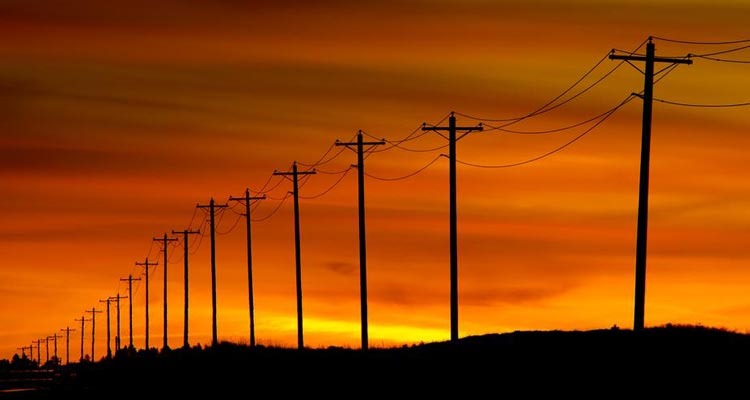 Utility Pole Solar Power Generation (Kornovich): International Patent Portfolio
Utility Pole Solar Power Generation (Kornovich): International Patent Portfolio
Utility poles are used to deliver electrical power to homes and businesses. But they have another application that is largely under-utilized. They can be used to hold solar panels so that each utility pole becomes a solar power generation station. Rooftops are being used for solar panels, and we see solar farms popping up all over, but there are 180 million utility poles in the U.S., and most of them are out in the open and exposed to the sun most of the day.
This international portfolio addresses exactly that opportunity. It includes specialty brackets that attach to any utility pole. These brackets hold three solar panels, one facing east, one facing south, and one facing west, so power is generated from sun-up to sun-down. The panels can be set at any pitch to optimize power generation, and the power from the solar panels can be used directly, sent into the grid, or saved to a battery. In times of power outages and natural disasters, emergency power kits containing the brackets and panels can be affixed to utility poles to produce power!
Patent Portfolio
- U.S. Patent No. 9,784,293: Utility pole mounted solar panels and securing brackets
- U.S. Patent No. 9,847,748: Utility pole mounted solar panels and securing brackets
- U.S. Patent No. 10,523,151: Utility pole mounted solar panels and securing brackets
- Canadian Patent Application 3013719: Utility pole mounted solar panels and securing brackets
- European Patent Application 3411949: Utility pole mounted solar panels and securing brackets
This portfolio – or selected patents in the portfolio – would be a strategic acquisition for any solar energy business or a company that supplies products to electric utilities.
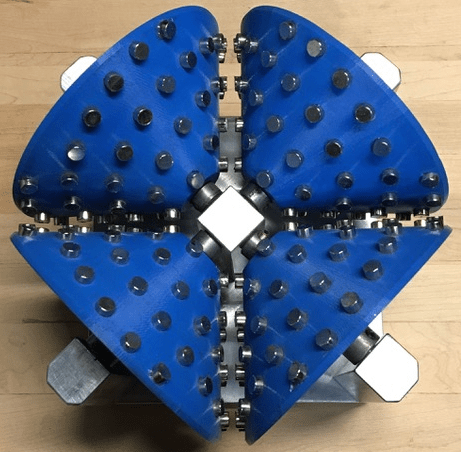 Six-Axis Frictionless Gear System (Leas): U.S. Patent No. 10,224,798
Six-Axis Frictionless Gear System (Leas): U.S. Patent No. 10,224,798
“It is not movement that destroys the machinery, but fiction.” So said Henry Ward Beecher, a 19th Century clergyman and abolitionist. While not an engineer by trade, Henry summarized a key factor in the coming Industrial Revolution. One of the most critical issues in any mechanical device is not just the power it generates, but the friction it produces. A key factor in the efficiency and longevity of any mechanical device is the minimization of friction in its design and operation.
The invention covered by this patent takes the reduction of friction to a new level by creating a non-contact, magnetic, spiral bevel gear from two-axis to six-axis construction, allowing for a multitude of variables in the gear design. This style of magnetic gearing provides a means to transmit motive power from one axis to another axis without any physical contact using magnetic fields as a non-contact means of transferring rotational power, creating a non-friction gear system. The benefits of non-friction, non-contact gearing are many. It reduces over-torque system breakaway and shaft gear repairs, and eliminates shaft-and-gear mis-alignment. The technology covered by this patent creates next-generation machinery that runs cooler, quieter, and lubrication-free, and is not subject to the wear and breakdowns of conventional hard-contact gearing systems.
U.S. Patent No. 10,224,798 for a “Magnetic spiral bevel gear” has applications in flywheel energy storage, wind turbines, hydropower, and other forms of power generation.
Incorporation of a six-axis magnetic gearing arrangement into a motor or generator reduces the gyroscopic action caused by the current generation of motors and generators. This technology can be applied to automobiles, trucks, busses, construction equipment, and other vehicles to produce frictionless gearing. This revolutionary concept can be scaled up or scaled down as needed, and can be applied to the fabrication of a drive component or be composed upon a drive shaft as a part of an electrical generator element that can help recharge the battery or send power to capacitor-based energy storage.
 Wind, Solar and Tidal Power Generator (PEN): U.S. Patent No. 10,526,056
Wind, Solar and Tidal Power Generator (PEN): U.S. Patent No. 10,526,056
Solar farms and wind turbines are an increasingly common sight these days. And green energy is steadily taking over a larger and larger share of the power generation pie. According to the U.S. Energy Information Administration, fossil fuels have dropped to 62.7% of electric power generation while renewables have grown to 17.5%. One of the drawbacks of solar, wind and tidal power is that none of them can produce power 24/7 like a fossil fuel plant can.
This patent addresses the shortcomings of wind, solar and tidal power generation by merging the three technologies into one device! This patent describes a buoyant platform with blades that capture tidal movement. Mounted on the buoyant platform – not the ocean floor – is a wind turbine. Also mounted on the platform and on the wind turbine blades are solar panels that generate electricity in the absence of wind. This green energy generation device can produce power 24/7. The tidal part of the device and the wind turbine generate electricity at night or when it is overcast, and the solar panels kick in on sunny days.
The patent does not simply merge tidal, wind, and solar into a single electrical power generation system, the patent also includes an improved design for solar panels. The patent describes solar panels that are composed of hemicylindrical channels that increase the surface area by a factor of 1.57. With a thickness of about 0.2 inches, the solar panels create heated, pressurized inner chambers through which flows heated water.
U.S. Patent No. 10,526,056 for “Generation of electric power using wave motion, wind energy and solar energy” would be a strategic acquisition for any tidal power generation, wind turbine or solar panel manufacturer that is prepared to expand into multiple green power energy sources.
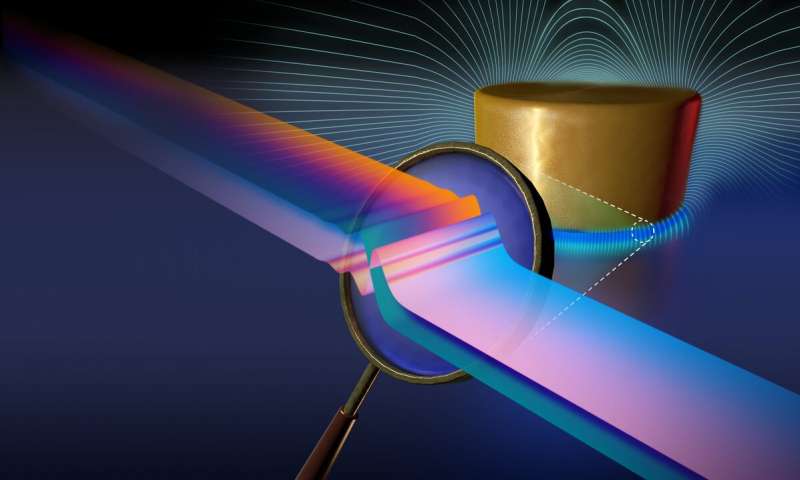 Kinetic Energy Amplifier (Bluegranite Media): U.S. No. 10,355,540
Kinetic Energy Amplifier (Bluegranite Media): U.S. No. 10,355,540
Since the invention of the steam engine, every possible effort has been taken to improve the power-producing effectiveness of engines, motors and turbines. And great strides have been made – especially in the last 30 or 40 years – to make gasoline and diesel engines, electric motors, and hydro, steam, wind, tide and wave turbines more efficient. Most of these improvements are based on friction and drag reduction, as well as more efficient transmission of the generated power, such as the eight-speed transmissions in most new cars.
This patent introduces a new factor into the ongoing battle for greater power production – magnetism. This patent creates a “kinetic energy amplifier” array that attaches around the drive shaft of an engine, generator, turbine or electric motor and uses the flux from a series of magnets to increase the power generated by the combination of the engine and the kinetic energy amplifier by as much as 33%! The invention can use either conventional iron magnets or ceramic permanent magnets that are lighter, and it can be scaled up or down to match the power-generation device to which it will be attached. This invention has applications in internal combustions engines, hydro and fossil fuel power plants, steam generators, green energy turbines, electric vehicles, trucks and busses – even aircraft – as a method to substantially increase power, dramatically reduce fuel consumption, increase range, and improve efficiency!
This patented technology can be incorporated into the next generation of engines, motors, turbines and generators, or current machinery can be relatively easily and quickly retro-fitted with kinetic energy amplifiers, creating an aftermarket product line that boosts energy output. U.S. Patent No. 10,355,540 for a “Magnetic drive enhancement” would be a strategic acquisition for any manufacturer of turbines, generators, internal combustion engines and electric motors, as well as any vehicle or aircraft manufacturer.
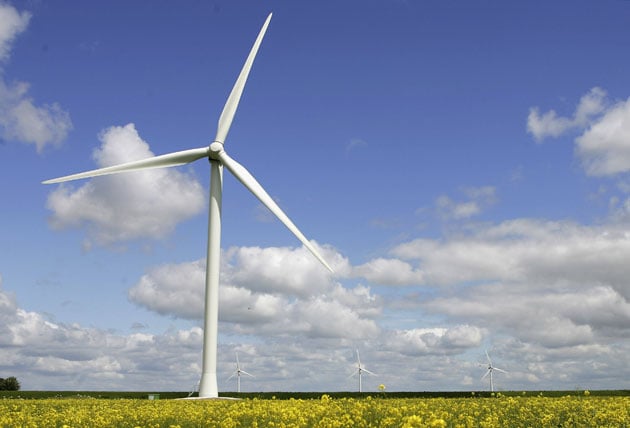 Power from Turbines During Periods of Low Air Flow (Arduini): Two U.S. Patents
Power from Turbines During Periods of Low Air Flow (Arduini): Two U.S. Patents
Wind turbines are a common sight today. And when the air flow is strong and consistent, the turbine is producing power and doing so very economically and ecologically. Tidal and wave-powered units are also highly efficient, green sources of power. But what happens when the wind, wave or tidal velocity drops? We’ve all seen wind turbines sitting idle and not turning – not generating electricity. In that mode, they are very expensive!
The invention covered by this patent family enables operation of wind, wave and tidal turbines during periods of low-flow velocity by temporarily disconnecting the load to allow the turbine's rotating mass to accumulate velocity and energy, and then dump it into a load as an energy pulse. The invention allows low-energy input charging power to be accumulated and then summed or integrated over a longer period. It can then be stored or transferred to an output load such as high-energy output discharging power over a shorter period of time. The result is improved efficiency and extended operating range for wind, tidal and wave turbines during periods of low-flow velocities.
The invention covered by this patent can be combined with the invention covered by U.S. Patent No. 10,247,262 for a “Variable and centrifugal flywheel and centrifugal clutch” – which appears on this page directly below this patent – to create a comprehensive solution to periods of low air, tide or wave flow.
U.S. Patent No. 7,843,077 for a “Pulsed energy transfer” would be a strategic acquisition for any wind, wave or tidal turbine manufacturer, or for an operator of wind, wave or tidal turbines that is looking to increase efficiencies and reduce down-time.
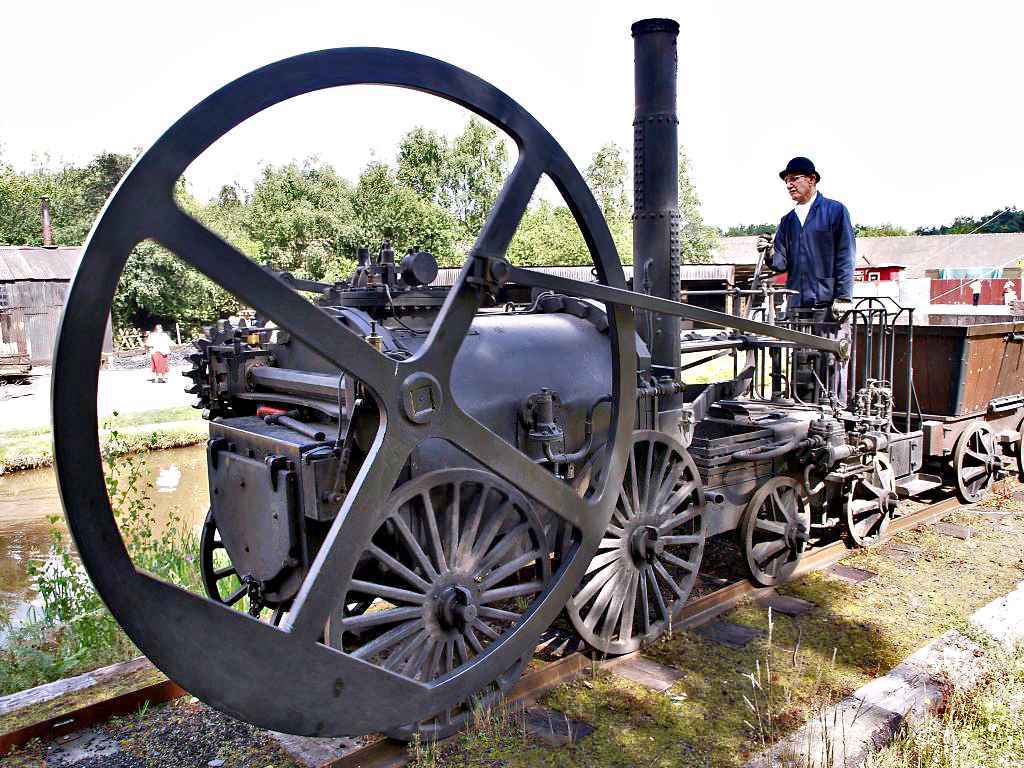 Next-Generation Clutch and Flywheel (Arduini): U.S. Patent No. 10,247,262
Next-Generation Clutch and Flywheel (Arduini): U.S. Patent No. 10,247,262
The flywheel has been a critical component in engines going back to the first steam engine that was invented and patented by Thomas Savery over 300 years ago. James Watt came along and made several improvements to the steam engine, but he retained the flywheel. Flywheels are most commonly used today in internal combustion engines. A flywheel stores rotational energy in reciprocating engines. In a four-cycle engine, for example, there is the exhaust stroke (no power generated there), the intake stroke (no power generated there, either), and the compression stroke (still no power generated). It is only on the power stroke that power is generated. The flywheel keeps everything turning between the power strokes.
The invention covered by this patent takes the 300-year-old flywheel to new levels of performance, especially when coupled with wind, wave or tidal turbines. The invention begins with a centrifugal-force-controlled clutch, an automatic mechanical clutch that is controlled by the RPM of the turbine. The pulsated input power automatically maintains the RPM operating range while increasing the stored energy, leading to improved efficiency during periods of low air, wave or tidal flow.
The invention then incorporates a centrifugal flywheel that automatically controls the variable mass radius that is displaced linearly with RPM for stored energy. The flywheel covered by the invention adjusts to variations in input and output of energy better than the conventional fixed flywheels found on rotating turbines and machines, enabling it to operate near the “sweet spot RPM” for optimal efficiency. This includes the ability to store pulsed or low-energy inputs and transfer, or to discharge the energy as needed for constant long periods or short pulse periods of average or peak power, RPM or torque.
The third element in the invention is an adjustable or variable flywheel that provides a wide range of RPM and variable mass radius displacement control for stored energy versus conventional fixed flywheels on rotating turbines and machines. It maintains a constant RPM, torque or G-force despite variations in input energy, stored energy, output load energy, and input/output pulsed energy, and does so far more effectively than conventional fixed flywheels.
These patents create improved efficiencies and operating characteristics for renewable-energy, energy-saving and energy-storage technologies such as power generated from wind, water and tides. New embodiments are being added in a Division-In-Part to broaden the scope of claims and applications. This patent can be paired with the technology covered in U.S. Patent No. 7,843,077 for a “Pulsed energy transfer” – which appears on this page directly above this patent – to create most comprehensive next-generation wind, wave and tidal turbines. The technology is also applicable to internal combustion and rotary engines, jet and ram/pulse jet engines, motors and generators, centrifuges and gyros, pulsed lasers and launchers/rail guns.
U.S. Patent Nos. 10,247,262 and 11,629,696 for a “Variable and centrifugal flywheel and centrifugal clutch” create an opportunity for any wind, wave or tidal turbine manufacturer to leapfrog the technology of all of its competitors and offer significantly more efficient green-power generation.
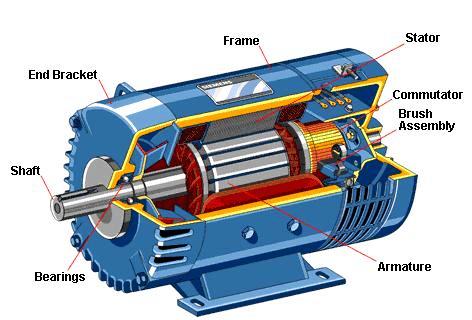 Energy Efficient, High-Torque Electric Motor (Morris): U.S. Patent No. 10,199,914 plus CIP
Energy Efficient, High-Torque Electric Motor (Morris): U.S. Patent No. 10,199,914 plus CIP
Electric vehicle manufacturers are doing everything possible to increase the range their vehicles can go on a charge. In addition to increasing battery capacity, the other strategy to accomplish this is to use electric motors that are more efficient. This intriguing patent addresses exactly that. In fact, it is the first new concept in electric motors in decades!
This patented electronic motor features a shaft that has a larger diameter and shortened length. It essentially “pancakes” the motor. It is a high-torque motor that operates more efficiently by taking advantage of repelling and attracting forces from magnetic fields. It uses lifting electromagnets for improved efficiency, and it includes a fail-safe feature that enables the motor to continue to operate even when some components fail! The inventor has developed a working prototype that can be viewed by any parties interested in the portfolio.
U.S. Patent No. 10,199,914 for “Closed loop leveraging electromagnetic motor” has applications in electric vehicles as well as any products currently using electric motors – such as water pumping stations plus construction and agricultural equipment – where increased efficiency is needed. The granted U.S. Patent comes with a Continuation-in-Part Application that enables the motor to use an app to control and monitor the motor’s parameters. This portfolio would be a critical acquisition for any electric vehicle company or manufacturer of equipment that use electric motors!
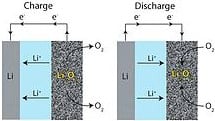 Higher Capacity, Rechargeable Lithium-Air Battery (Miles): U.S. Patent No. 8,795,868
Higher Capacity, Rechargeable Lithium-Air Battery (Miles): U.S. Patent No. 8,795,868
The most significant limitation for electric vehicles is range. Most cannot go as far on a charge as a gasoline-powered car can go on a tank of gas, and charging stations are not nearly as common as gas stations. The next major technological challenge facing electric vehicle manufacturers is improved range, and that means a new generation of lithium batteries that can hold a greater charge. This patent addresses exactly that need!
In a typical lithium-ion battery, lithium ions transfer from the metallic lithium component of the anode electrode into an electrolyte leaving an electron behind, and the lithium ions circulate as positive ions in the electrolyte, replacing the lithium ions consumed at the lithium-ion battery cathode. In next-generation lithium-air batteries, oxygen is passed through the pores in the cathode and introduced into the electrolyte. These negative oxygen ions combine with the lithium ions to produce lithium peroxide and/or lithium oxide. The electrical charges produced by these reactions pass externally between the electrodes to provide external electrical current.
The only way to increase the power stored in a lithium battery – and thereby enable electric vehicles to go as far on a charge as gasoline-powered autos can go on a fill-up – is to switch to a molten-nitrate-salt electrolyte battery in which the electrolyte is heated above its melting point to become an ionically conductive liquid containing lithium ions and nitrate ions. A lithium anode and cathode are immersed in the electrolyte, and the nitrate ions in the electrolyte become an internal source of oxygen when the electrolyte is heated to above its melting point. The anode and cathode are connected to the conductive surface, and electrical current flows through the battery as a result of the electrochemical reactions in the electrolyte, outputting substantially more electric current than current-generation lithium batteries.
U.S. Patent No. 8,795,868 for a “Rechargeable lithium-air and other lithium-based batteries using molten nitrates” is a robust patent with 19 Claims. It would be a critical acquisition by any battery OEM or electric vehicle manufacturer that is seeking to produce higher-capacity lithium-air batteries.
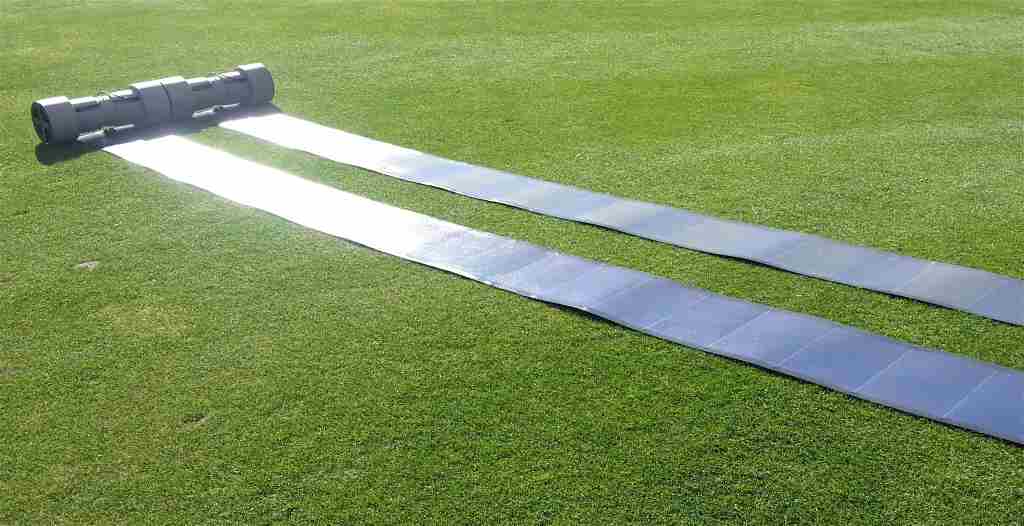
 Electric Power Virtually Anywhere (Riley): U.S. Patent No. 9,825,583
Electric Power Virtually Anywhere (Riley): U.S. Patent No. 9,825,583
Solar panel farms and roof-mounted solar panels are an increasingly common site across the U.S. Wouldn’t it be incredibly convenient if you could set up solar panels when and where you needed them for power? Thanks to this invention, you can. This patent introduces a portable solar panel system. Thin-film solar panels come in a roll, and they are simply rolled out onto the ground or on the surface of a body of water (they float). The invention includes a power inverter so the system can be adapted to produce 120 volts of AC current or whatever power is required by the user.
The solar panels can be laid out on the ground or on the surface of a lake, pond or other body of water – even the ocean – and they begin to produce power in minutes. The technology is totally scalable – add as many panels as are needed to produce the electric current that is required. Smaller sets of panels that are easier to transport can be linked together to produce whatever level of electric power is needed. The portable solar power system covered by this patent has multiple applications:
- Campers, RVers, fishermen, hunters, hikers, scientists and explorers who need power out in the wilds
- Power for irrigation systems or construction where local power is not available or convenient
- Power for remote or third-world communities that are not attached to the grid
- Emergency power using a battery or storage device to save power generated during the day for power overnight
- Power for the military to charge batteries or run electronic equipment that is quiet and inconspicuous, and also frees up gas and diesel fuel for vehicles and equipment
The acquirer of U.S. Patent No. 9,825,583 for a “Portable solar energy system” will own technology that will create an entirely new business segment in both the solar power sector and the portable power industry!
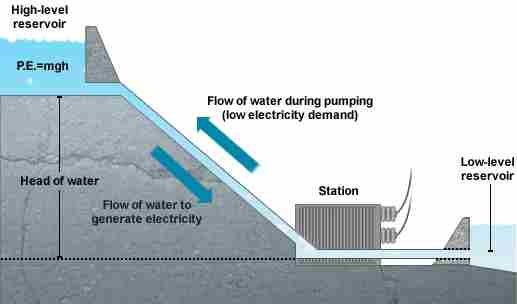 Hydro-Electric Energy Storage (Aaltonen): U.S. Patent No. 8,274,168 plus European Patent Application
Hydro-Electric Energy Storage (Aaltonen): U.S. Patent No. 8,274,168 plus European Patent Application
Many electric utilities own a large lake (Candlewood Lake built by Connecticut Light and Power in 1926 is a good example) into which they pump water at night – when demand is low – and run water out during the day – when demand is high – through turbines to produce electric power. These lakes are essentially batteries that efficiently and cost-effectively store huge amounts of electric power. But what does an electric utility do if it did not buy a huge tract of land 100 years ago when land was cheap?
U.S. Patent No. 8,274,168 for “Generating hydroenergy” addresses exactly that issue. The invention covered by this patent uses an existing body of water – a lake or reservoir – to store excess electric power and retrieve that power when needed. This technology applies to any electric utility, but it is especially useful for the storage of excess power from offshore wind farms. In addition to the U.S. Patent, there is a European Patent Application, so the company that acquires this patent will be able to build highly efficient and environmentally safe electric energy storage systems for electric utilities across the U.S. and Europe.
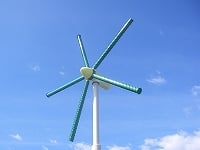 Improved Air Flow Magnus Wind Turbine (Kheirandish): U.S. Patent No. 9,273,666
Improved Air Flow Magnus Wind Turbine (Kheirandish): U.S. Patent No. 9,273,666
More and more of the electricity we use is green, and wind power is a growing sector. In fact, wind turbines have become a common sight on both land and at sea. The challenge with any electrical generation system – be it fossil fuel or renewable – is to make the system more efficient, and that is what the invention covered by this patent does. Magnus wind turbines do not use the propeller-type blades on conventional wind turbines, but use rotary shafts that transfer torque to a generating mechanism. They are called “Magnus” turbines because they work on what is known as the “Magnus effect” – the sideways thrust on a rotating cylinder placed with its axis perpendicular to a current of air.
Just as the earliest wind mills had large flat blades that were replaced over time with the narrow blades used on the conventional wind turbines of today, the shape of the rotary shafts on Magnus turbines has changed over time. This patent covers an invention in which an air-flow-directing plane directs airflow to the low-pressure area, causing a delay and an increase in Magnus lift. Additionally, the crossed spiral on the surface of the turbine’s cylinder provides more airflow in three directions upon the rotary cylinder, and this produces yet more Magnus force.
U.S. Patent No. 9,273,666 for a “Magnus-type wind power generator” would be an excellent acquisition for any business that manufactures generators, both fossil fuel-powered units and wind turbines. This invention will give its owner the opportunity to leapfrog the technology of all of its competitors and offer a next-generation, more efficient electric-power-generating unit.
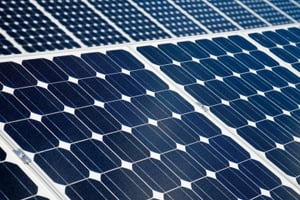 Lower-Cost Photovoltaic Cell Manufacture (Schwartz): U.S. Patent No. 8,618,411
Lower-Cost Photovoltaic Cell Manufacture (Schwartz): U.S. Patent No. 8,618,411
Solar power has taken off, and solar panel farms and solar panels on rooftops are becoming common sights around the world. As solar companies try to reduce costs, one area of potential cost reduction is to make the manufacturing of the photovoltaic (PV) cells that constitute the solar panels more efficient and less expensive. This is exactly what the invention covered by this patent does! PV cells are currently manufactured upside-down starting with the glass front and ending with the metal back. This Patent turns the process right-side-up so metal foil roll-fed production is possible. The significant reduction in manufacturing cost will make U.S. PV cell OEMs competitive with Asian manufacturers!
U.S. Patent No. 8,618,411 for a "Method of making photovoltaic cell" would be a critical acquisition for any business in the solar power industry. Manufacturers would use the technology directly, while solar panel installers would license it back to their solar panel suppliers.
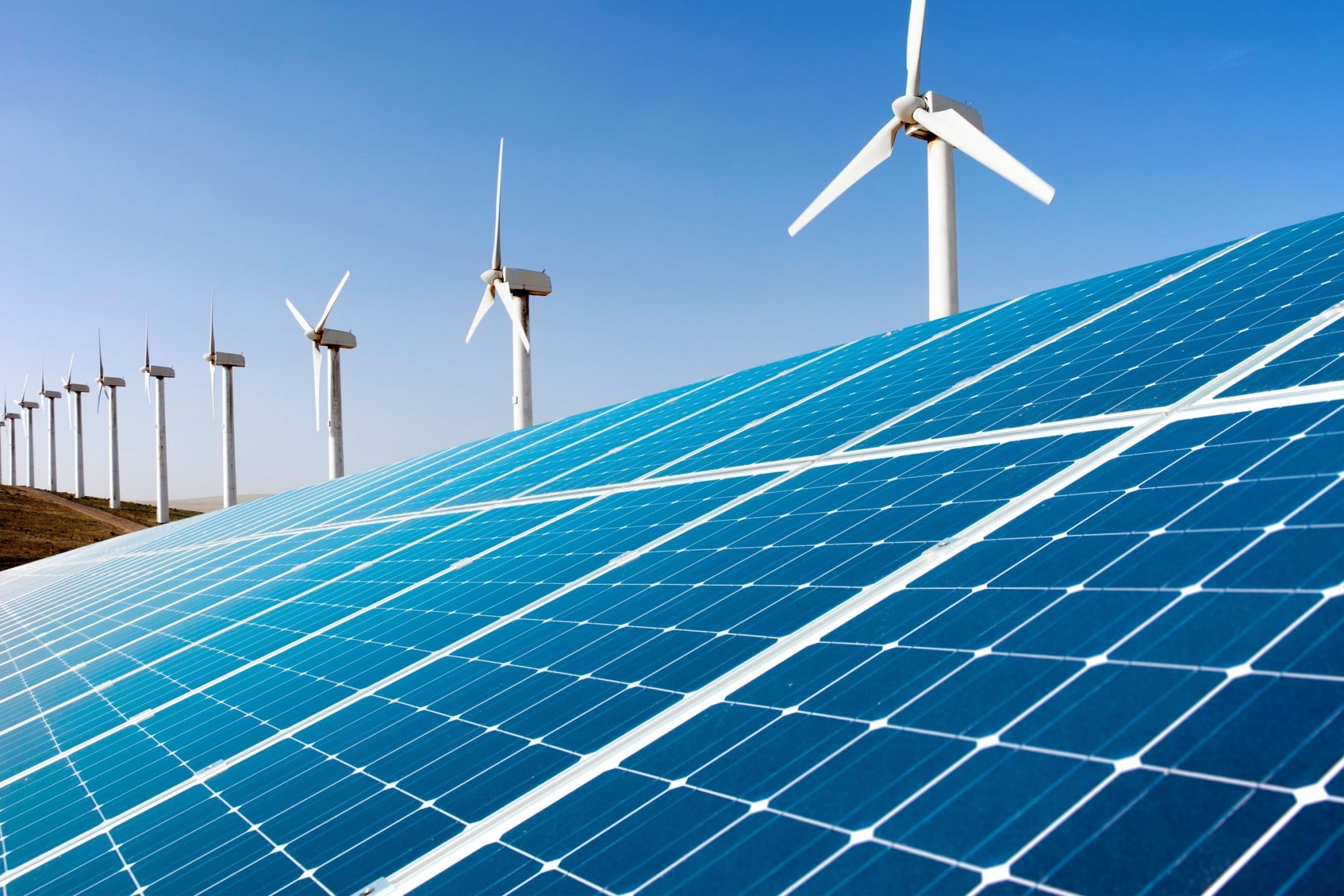 Wind/Solar Generator (White): U.S. Patent No. 8,269,368
Wind/Solar Generator (White): U.S. Patent No. 8,269,368
This patent takes both wind and solar power-generation to the next technology. The invention covered by this patent starts with a totally new concept in wind power generation. A conical vortex moves air through the unit with as little interference as possible, reducing heat and improving efficiency. The cowl-housed design addresses many of the problems with the wind turbines of today – height requirements, whoosh noise, bird kills, high maintenance costs, downtime for maintenance, high-wind and low-wind downtime, and limited access to transmission lines – to name just a few. Solar panels provide power when wind speed is too low or too high. In addition, the technology is totally scalable, so units can be manufactured in various sizes and generation capacities.
U.S. Patent No. 8,269,368 for a "Wind and solar electric generator" would be a critical asset for any wind turbine OEM, or any business looking to break into the wind power sector.
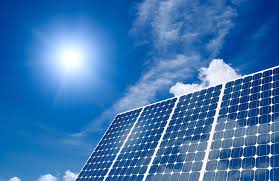 Swivel Solar Tracking Device (Moore): U.S. Patent No. 9,182,153 and PTO Application
Swivel Solar Tracking Device (Moore): U.S. Patent No. 9,182,153 and PTO Application
The invention covered by this patent describes a swivel tracking device that orients solar panels or arrays toward the sun throughout the daylight hours to harness the maximum amount of energy. This single device enhances the output efficiency of solar panels by 20% to 40% as compared to fixed solar panels, an improvement that other trackers require two mechanisms to achieve. This patent provides these key advantages:
- Novel, low-friction, swivel-positioning device that provides a significant improvement in tracker performance
- Swivel-positioning device allows rotation on a ball joint unlike conventional solar tracker positioning devices that pivot or rotate around an axis
- Rotation of the ball joint allows array rotation within the plane of incidence for shading avoidance
- Provides a full range of motion, ensuring that the maximum sunlight is captured and retained for optimal performance with a photovoltaic capture of 97% at 30 degrees latitude
- Low-friction movement means minimal tracker-energy consumption
- Effective and efficient tracking of the sun with a panel or array of panels
The growing popularity of solar power as an alternative to – or supplement for – fossil fuels has led to significant growth in this sector. The solar panels themselves are a mature technology, so the focus is now on optimizing the power generated by solar panels. The swivel-positioning device provides a means of adding an additional dimension to power-generation optimization. The acquirer of U.S. Patent No. 9,182,153 for a “Ball bearing tracker assembly “ will have a unique strategic competitive advantage over its competitors.
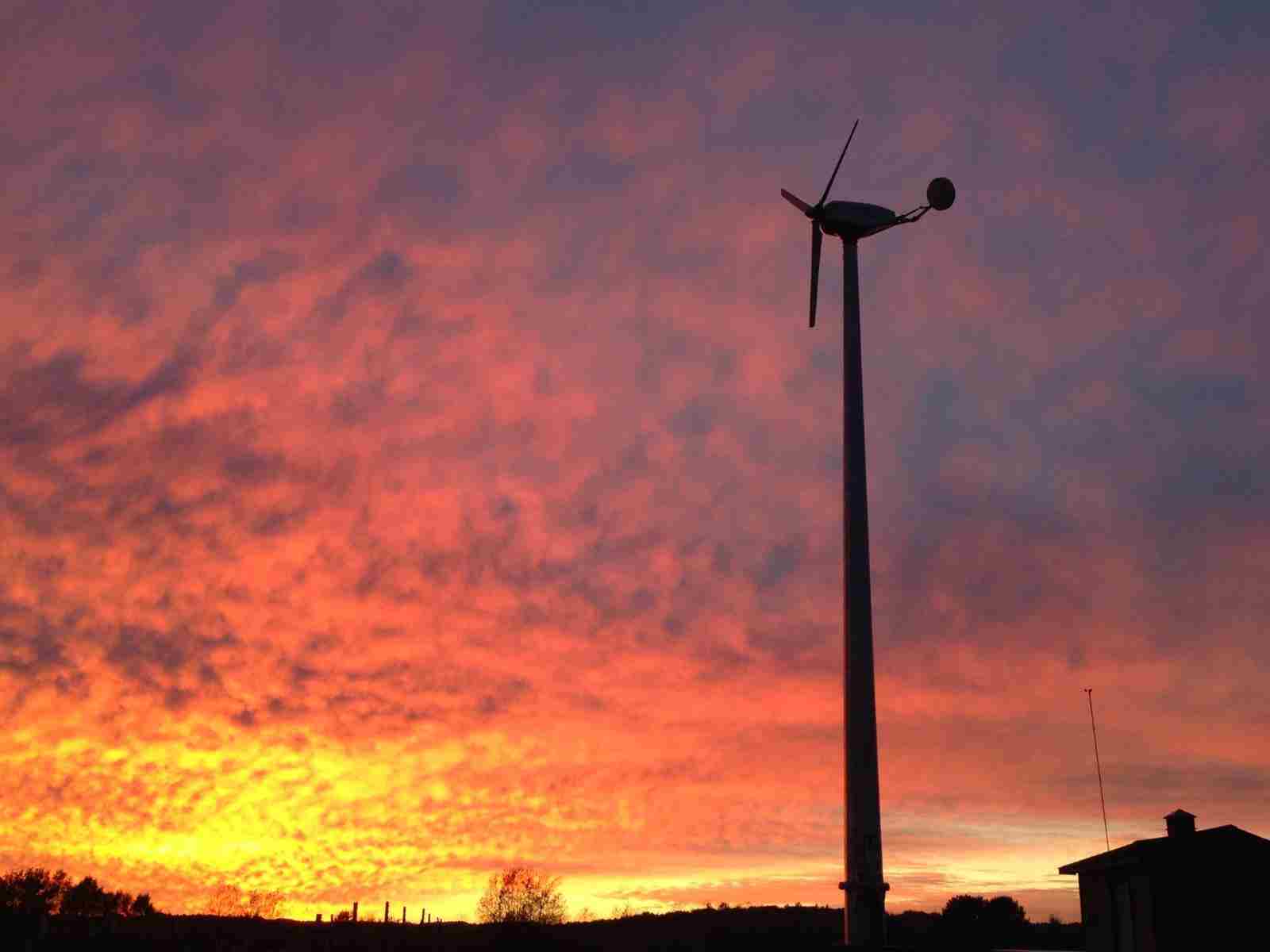 Zero-Contact Transmission for Wind Generators (Future Force): International Portfolio of Four U.S. Patents
Zero-Contact Transmission for Wind Generators (Future Force): International Portfolio of Four U.S. Patents
While renewable power such as wind is low cost, a substantial amount of the energy generated by the wind turbine’s blades is lost to heat and friction in the transfer of power to the electric-generation unit. This international portfolio covers a transmission that uses magnets to dramatically reduce friction and, thereby, also reduce energy loss in the system’s drive chain. The Zero-Contact Transmission covered by this Patent has its most obvious applications in wind power, but it also has applications in any power-generation system that is based on mechanical energy such as hydropower, tidal and wave power, and fossil fuel and trash-burning plants.
Patent Portfolio
U.S. Patent No. 7,777,377: Magnetic Propulsion Motor
U.S. Patent No. 8,084,904: Magnetic Propulsion Motor
U.S. Patent No. 8,519,584: Magnetic Propulsion Motor
U.S. Patent No. 9,118,211: Magnetic Propulsion Motor
The power-generation equipment manufacturer that acquires this technology will leap frog the technology of all of its competitors and gain a critical and strategic competitive advantage!
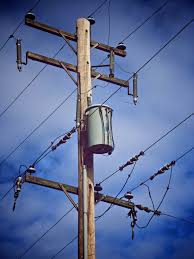 Off-Peak Power Conservation System (Evans): U.S. Patent and PCT Patent Application
Off-Peak Power Conservation System (Evans): U.S. Patent and PCT Patent Application
The supply of electric power provided by the local electric utility and other power sources – such as solar and wind – is totally unrelated to the demand for electric current. This portfolio covers a technology for a power conservation system with several advantages:
- Supplies the power required by a load circuit, based on demand by industrial, commercial and residential users of electric utility power while simultaneously conserving the power supplied by an AC utility power source, and thereby decreasing the load on the national electrical grid
- Actively monitors and controls to achieve minimum consumption of electric utility power from the local utility
- Provides increased capabilities, additional DC rechargeable energy source, additional charging capacity, and additional inverting capacity
- Provides three configurations of the power conservation system for various applications
- Incentifies use of more green-power generation solutions
This portfolio includes U.S. Patent No. 7,915,760 for an “Electric power conservation system for storing power during off-peak hours” plus PCT Patent Application 2009076662 for an “Electric power conservation system,” and it creates a unique opportunity for a power generation or power distribution company, green power solution provider, or power storage hardware provider to leap frog its competitors in the area of energy conservation.
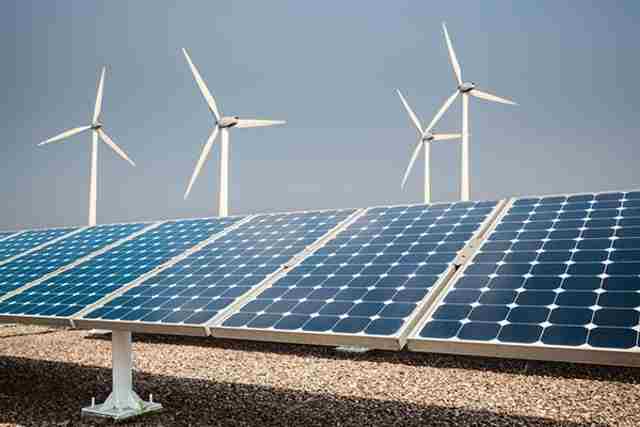 Multiple Power Source Management System (Hardin): U.S. Patent No. 9,281,688
Multiple Power Source Management System (Hardin): U.S. Patent No. 9,281,688
This portfolio discloses a power source management system that provides an energy solution for users who have multiple available inputs to choose from such as wind, solar, geothermal, natural gas, grid, etc. Users can install the patented device, set their preferences, and the system monitors, controls and optimizes the output of those energy streams. As more utilities shift their distribution infrastructure to a distributed generation model, the patented device allows for energy to be directed back into the grid, shared, sent to a commercial or residential scale battery bank, or offloaded.
The company that acquires this portfolio will be able to offer an energy-management device that can manage and pull from prioritized energy generation sources. The product can serve residential consumers, businesses and utilities.
U.S. Patent No. 9,281,688 for an “Energy management system for multiple power inputs” will enable the company that acquires it to offer an energy-management systems. Acquirers include power distribution and energy storage companies, green power providers, state governments, electric utilities, and battery and inverter suppliers.
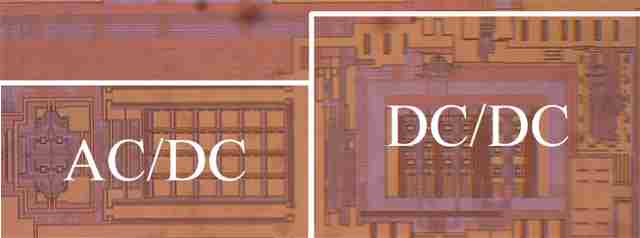 AC/DC Solar and Battery Power Management System (Wang): U.S. Patent No. 7,830,038
AC/DC Solar and Battery Power Management System (Wang): U.S. Patent No. 7,830,038
This patent discloses a power management system with the following advantages:
- It improves the efficiency and reliability of renewable energy systems by first separating the renewable sources, batteries and loads with switches which are then controlled by the patented power management system.
- It maximizes the availability of the generated renewable power.
- It integrates switches, DC-to-DC converter, and DC-to-AC inverter into a single chip or module design which reduces the cost of the system.
- It is scalable for renewable systems ranging from MW to GW outputs.
There is an immediate need for clean, green, cost-effective energy solutions. U.S. Patent No. 7,830,038 for a “Single chip solution for solar-based systems” addresses an important niche in the technology landscape for any renewable product, having integrated converters, inverters and switches, so the patented technology has the potential to secure a sizeable share of the market for renewable power systems. This patent would be a critical acquisition for any rooftop solar system provider, electric utility, data center, solar farm, or chip, mobile phone or electric vehicle manufacturer.
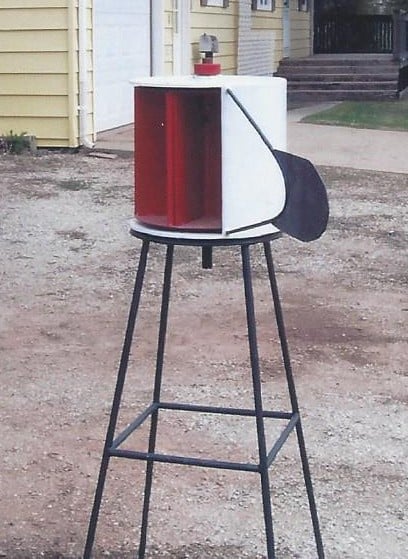 Vertical-Axis, Scalable, Wind Turbine (Pohribnak): U.S. Patent No. 7,744,345”
Vertical-Axis, Scalable, Wind Turbine (Pohribnak): U.S. Patent No. 7,744,345”
This patent describes a next-generation wind power generator with several advantages over existing technologies:
- Provides high wind power recovery at low heights so they are not harmful to flying
- Produces less noise, which results in reduced noise pollution when several of these devices are installed in a specific area
- Operable at any location, without any difficulty or performance reduction
- Vertical axis requires no wind-sensing mechanisms in order to generate electricity
- Scalable design means units can be sized to power, space or transport requirements
- Motor and ring gear assembly control the direction of the housing so it catches optimal wind power
- Major power generating components such as the gearbox and generator are located towards the base of the turbine, so maintenance and repair activities are relatively more convenient
U.S. Patent No. 7,744,345 for a “Wind power generator” would be a key acquisition for manufacturers of wind turbines and providers of turnkey wind turbine installations; wind energy products distributors; service providers for residential and commercial wind energy installations; irrigation systems manufacturers and installers; construction and emergency power providers; and home owners, farmers and businesses to provide power locally and economically or for net metering.
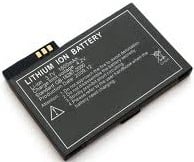 Lithium Salts for Lithium Ion Batteries (Air Products and Chemicals): International Patent Portfolio
Lithium Salts for Lithium Ion Batteries (Air Products and Chemicals): International Patent Portfolio
This portfolio covers processes for producing, purifying and drying lithium salts for use in Lithium Ion batteries, and also has application to some fuel cell technologies. Lithium batteries are compact, so they are popular in cell phones and consumer electronics, and are gaining use in electric vehicle, aircraft and aerospace applications. The portfolio includes nine issued U.S. Patents and one U.S. patent applications.
In addition to this portfolio, the acquirer will receive a full technology transfer package, and there are additional related patents that are available to license. The key advantages of the lithium salt described in these patents pertain to both the hydrolytic and thermal stability of the salts, allowing for higher temperature cell operation. Also, the salts have a unique electrochemistry that provides overcharge protection through a redux shuttle mechanism.
This extensive, international portfolio includes 10 U.S. Patents in eight patent families that include European, Chinese, Japanese, Korean, and Canadian patents. Select patent families can be acquired or the entire portfolio.
Lithium Salts for Lithium Ion Batteries Portfolio
- U.S. Patent No. 7,311,993: Polyfluorinated boron cluster anions for lithium electrolytes
- U.S. Patent No. 7,348,103: Polyfluorinated boron cluster anions for lithium electrolytes
- Japanese Patent 5058229: Electrolyte for lithium secondary battery and rechargeable lithium battery
- German Patent 602004027449: Polyfluorinated Boron Cluster Anions for Lithium Electrolytes
- U.S. Patent No. 7,419,623: Proton conducting mediums for electrochemical devices and electrochemical devices comprising the same
- U.S. Patent No. 7,591,964: Electrochemical devices comprising proton conducting mediums
- European Patent 1624519: Proton conducting mediums for electrochemical devices and electrochemical devices comprising the same
- Chinese Patent 100470901: Proton conductive medium for electrochemical device, and electrochemical device including it
- Korean Patent 100786604: Proton conducting mediums for electrochemical devices and electrochemical devices comprising the same
- Korean Patent 100861033: Proton conducting mediums for electrochemical devices and electrochemical devices comprising the same
- Taiwanese Patent 286854: Proton conducting mediums for electrochemical devices and electrochemical devices comprising the same
- Canadian Patent 2513918: Proton conducting mediums for electrochemical devices and electrochemical devices comprising the same
- U.S. Patent No. 7,465,517: High purity lithium polyhalogenated boron cluster salts useful in lithium batteries
- European Patent 1630895: High purity lithium polyhalogenated boron cluster salts useful in lithium batteries
- Chinese Patent 101814625: A lithium treatment process
- Chinese Patent 101383430: Process for lithium salt treatment
- Japanese Patent 4703319: High purity lithium polyborohydride cluster salts useful for lithium batteries
- Korean Patent 100709958: High purity lithium polyhalogenated boron cluster salts useful in lithium batteries, electrolyte and battery comprising said salt, and method for treating said salt
- Taiwanese Patent 295117: High purity lithium polyhalogenated boron cluster salts useful in lithium batteries
- U.S. Patent No. 7,718,154: Process for producing boranes
- German Patent 602006005741: Process for the preparation of boranes
- U.S. Patent No. 7,785,740: Overcharge protection for electrochemical cells
- European Patent 1587158: Overcharge protection for electrochemical cells
- Chinese Patent 100530811: Overcharge protection for electrochemical cells
- Japanese Patent 4938247: Electrochemical battery overcharge protection
- Japanese Patent 2011253827: Overcharge protection for electrochemical cells
- Korean Patent 100758570: Electrochemical cells providing overcharge protection
- Taiwanese Patent 257726: Overcharge protection for electrochemical cells
- U.S. Patent No. 7,981,388: M Process for the purification of lithium salts
- Chinese Patent 101304102: High purity lithium polyhalogenated boron cluster salts useful in lithium batteries
- Japanese Patent 2008251528: High-purity lithium polyhalogenated boron cluster salt useful for lithium battery
- Japanese Patent 2011198771: High purity lithium polyhalogenated boron cluster salts useful in lithium battery
- Korean Patent 101046107: How to purify battery active materials
- Taiwanese Patent 427036: Method for removing hydroxyl group impurities k2b12fx(oh)12-x from a material containing k2b12fxh12-x
- Canadian Patent 2621794: High purity lithium polyhalogenated boron cluster salts useful in lithium batteries
- U.S. Patent No. 8,758,945: Overcharge protection by coupling redox shuttle chemistry with radical polymerization additives
- European Patent 2237360: Overcharge protection by coupling redox shuttle chemicals with radical polymerization additives
- European Patent 2122741: Overcharge protection by coupling redox shuttle chemistry with radical polymerization additives
- Chinese Patent 101689678: Overcharge protection by coupling redox shuttle chemistry with radical polymerization additives
- Korean Patent 101149292: Overcharge protection by coupling redox shuttle chemistry with radical polymerization additives
- Canadian Patent 2678559: Overcharge protection by coupling redox shuttle chemistry with radical polymerization additives
- Hong Kong Patent 1146156: Overcharge protection by coupling redox shuttle chemistry with radical polymerization additives
- U.S. Patent No. 9,755,269: Dodecaborate salt radical anion compositions and methods for making and using such compositions
- Japanese Patent 5258895: Twelve borate radical anion composition and method for making and using the composition
- Korean Patent 101256177: Dodecaborate salt radical anion compositions and methods for making and using such compositions
- Mexican Patent 2010005197: Dodecaborate salt radical anion compositions and methods for making and using such compositions
With the dynamic growth and increasing demand for Lithium Ion batteries, this portfolio is a key acquisition for any business seeking to expand its presence as a supplier of Lithium Ion batteries, or as a supplier to Lithium Ion battery OEMs.
Patent Brokerage Prospectus: Contact [email protected] to receive an analysis of each portfolio that includes:
- Executive Summary
- Patent Overview and History
- Technology and Investment Summary
- Market Research
- Company Analysis
- Illustrative Evidence of Use (if applicable)
We offer patents in these technologies:
- Agricultural
- Artificial Intelligence
- Automotive/Vehicular
- Banking/Financial Services
- Beverages/Foods/Nutritional Products
- Cannabis and Medical Marijuana
- Construction/Building Trades
- Consumer Electronics
- Consumer Products
- Digital Currency/Cryptocurrency
- Drones/UAVs
- E-Cigarette & Vaping Technology
- E-Commerce
- Energy/Power Generation
- IoT Patents/Internet of Things
- Manufacturing
- Medical Electronics and Devices
- Mining/Drilling
- Mobile/Wireless
- Network/Location-Based Services
- Optics/Displays/Video/LED
- OTT Patents/Over-the-Top
- Packaging
- PCs and Notebooks
- Pharmaceuticals
- Robotics/Automation
- Semiconductor
- Smart Home/Smart Office
- Social Media
- Software, Apps, and Architecture
- Sports/Sporting Goods
- Telecommunications/IP Telephony
- Warehousing/Material Handling
- Other
- Go to Patent Index
- Return to Patent MarketPlace




